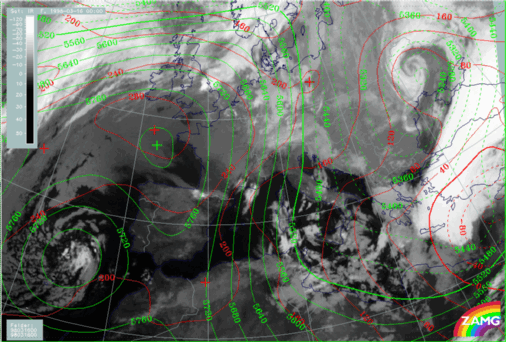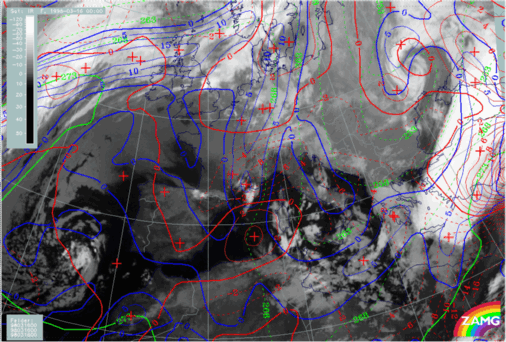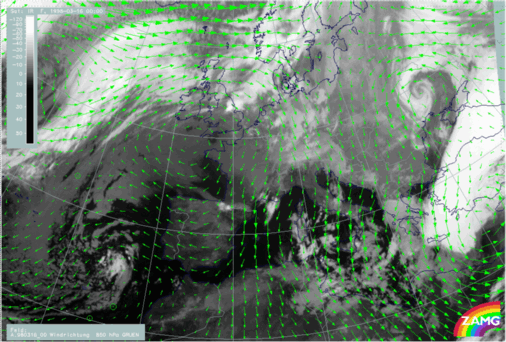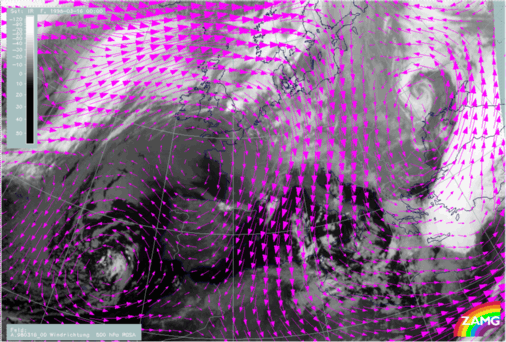16 March 1998/00.00 UTC - Meteosat IR image; red: height contours 1000 hPa, green: height contours 500 hPa

by ZAMG


|
15 March 1998/18.00 UTC - Meteosat IR image; green: wind vectors 850 hPa
|
15 March 1998/18.00 UTC - Meteosat IR image; magenta: wind vectors 500 hPa
|

|

|